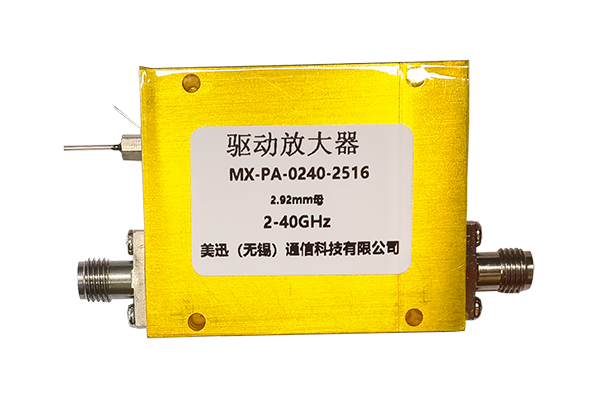
Pin diodes have become a crucial element in high-frequency systems because of their innate electrical traits Their high-speed switching performance and low capacitance along with negligible insertion loss position them well for switch modulator and attenuator implementations. The basic mechanism behind pin diode switching depends on regulating the device current via an applied bias voltage. The control voltage varies the depletion region dimensions at the junction and thereby alters conductive behavior. Controlling the bias point makes it possible for PIN diodes to switch at microwave frequencies with low distortion
For applications demanding exact timing and control PIN diodes are typically incorporated into complex circuitry They are useful in RF filtering systems for choosing which frequency bands to pass or suppress. Their strong signal handling properties make them practical for amplifier power divider and signal generation uses. Advances producing smaller and efficient PIN diodes have widened their roles in modern wireless and radar applications
Study of Coaxial Switch Performance
Creating coaxial switches is a challenging task that demands consideration of a variety of technical parameters The performance is governed by the choice of switch type frequency operation and insertion loss properties. An efficient coaxial switch should reduce insertion loss while optimizing isolation between ports
Assessment of switch performance typically measures metrics including return loss insertion loss and isolation. Performance figures are derived from simulation modeling theoretical analysis and empirical testing. Careful and accurate evaluation is vital to certify coaxial switch reliability in systems
- Common analysis methods include simulation tools theoretical analysis and hands-on experiments to study switch performance
- Thermal effects impedance mismatches and production tolerances are major influences on coaxial switch behavior
- Cutting-edge developments and emerging trends in switch engineering work to improve performance while shrinking size and reducing power usage
Design Strategies for Low Noise Amplifiers
Improving LNA performance efficiency and gain is key to maintaining high signal fidelity across applications Achieving results demands careful transistor picks optimized bias settings and considered topology design. High quality LNA layouts suppress noise sources and deliver amplified signals with limited distortion. Simulation modeling and analysis tools are indispensable for assessing how design choices affect noise performance. Securing a low Noise Figure indicates superior capability to amplify while adding little noise
- Choosing transistors with inherently low noise characteristics is critically important
- Establishing proper bias conditions with optimal settings minimizes noise within transistors
- Topology decisions critically determine how noise propagates in the circuit
Employing matching networks noise suppression and feedback systems refines LNA performance
Radio Frequency Path Routing with Pin Diodes

PIN diode switching mechanisms deliver versatile and efficient RF path routing across designs The semiconducting switches operate at high speed to provide dynamic control over signal paths. The low insertion loss and high isolation of PIN diodes help maintain signal integrity during switching. Typical applications include antenna switching duplexing and RF phased arrays
A PIN diode switch’s operation depends on modulating its electrical resistance with a control voltage. The deactivated or off state forces a high resistance barrier that blocks RF signals. With forward bias the diode’s resistance diminishes permitting the RF signal to flow
- Furthermore additionally moreover pin diode switches deliver fast switching speeds low power use and compact footprints
Various PIN diode network configurations and architectural designs can achieve advanced signal routing functions. Combining multiple switch elements makes possible dynamic switching matrices enabling flexible routing
Coaxial Microwave Switch Assessment and Efficacy

Evaluation and testing of coaxial microwave switches is vital for verifying correct operation in electronic networks. Diverse factors including insertion reflection transmission loss isolation switching speed and frequency span impact performance. A comprehensive evaluation process involves measuring these parameters under a variety of operating environmental and test conditions
- Further the testing should consider reliability robustness durability and capability to withstand harsh environmental factors
- Finally the result of robust evaluation gives key valuable essential data for choosing designing and optimizing switches to meet specific requirements
Review of Techniques to Reduce Noise in Low Noise Amplifiers
LNAs are indispensable in wireless RF communication systems because they raise weak signals while suppressing noise. This review presents a thorough examination analysis and overview of noise mitigation strategies for LNAs. We explore investigate and discuss principal noise contributors like thermal shot and flicker noise. We also examine noise matching feedback circuitry and optimal biasing strategies to mitigate noise contributions. The review emphasizes recent innovations including novel materials and architecture approaches that decrease noise figures. By summarizing key noise suppression principles and practices the review assists engineers and researchers developing high performance RF systems
Rapid Switching System Uses for PIN Diodes

PIN diodes have exceptional unique remarkable properties that suit high speed switching applications Their small capacitance and low resistance facilitate high speed switching suitable for accurate timing control. Moreover PIN diodes exhibit linear proportional responses to applied voltage enabling precise amplitude modulation and switching control. The combination of adaptability versatility and flexibility makes them suitable applicable and appropriate across many high speed applications Typical domains include optical communication systems microwave circuitry and signal processing hardware and devices
Integrated Coaxial Switch and Circuit Switching Solutions
Integrated circuit coaxial switching technology brings enhanced capabilities for signal routing processing and handling within electronics systems circuits and devices. The ICs are designed to direct manage and control coaxial signal flow offering high frequency operation and reduced propagation insertion latency. Integrated circuit miniaturization creates compact efficient reliable and robust designs favorable for dense interfacing integration and connectivity use cases
- By meticulously carefully and rigorously adopting these practices designers can deliver LNAs with excellent noise performance supporting reliable sensitive systems Through careful meticulous and rigorous application of such methods engineers can design LNAs with top tier pin diode switch noise performance enabling dependable sensitive systems By meticulously carefully and rigorously applying these methods developers can produce LNAs with superior noise performance enabling sensitive reliable electronics With careful meticulous and rigorous deployment of these approaches developers can accomplish LNAs with outstanding noise performance enabling trustworthy sensitive electronics
- Use cases include telecommunications data communications and wireless network infrastructures
- These technologies find application in aerospace defense and industrial automation fields
- IC coaxial switching finds roles in consumer electronics audio visual equipment and test and measurement tools
Design Tips for Low Noise Amplifiers in mmWave Bands

Design of LNAs at millimeter wave frequencies requires mitigation of higher signal loss and noise influence. Component parasitics strongly influence mmWave performance mandating careful PCB layout and component choice. Ensuring low input mismatch and strong power gain is critical essential and important for LNA operation at mmWave. Device selection including HEMTs GaAs MESFETs and InP HBTs plays a decisive role in attaining low noise figures at mmWave. Additionally furthermore moreover careful design implementation and optimization of matching networks is vital for efficient power transfer and impedance matching. Attention to package parasitics is crucial as they have potential to harm mmWave LNA performance. Implementing low-loss transmission lines along with proper ground plane design is essential necessary and important for reducing reflection and ensuring bandwidth
PIN Diode RF Characterization and Modeling Techniques
PIN diodes function as crucial components elements and parts across various RF switching applications. Exact detailed and accurate characterization of these devices is essential for the design development and optimization of reliable high performance circuits. That entails analyzing evaluating and examining electrical voltage and current characteristics such as resistance impedance and conductance. Also characterized are frequency response bandwidth tuning capabilities and switching speed latency response time
Additionally the development of accurate models simulations and representations for PIN diodes is vital essential and crucial for predicting their behavior in RF systems. A range of modeling approaches including lumped element distributed element and SPICE models are used. Choosing the proper model relies on the specific application requirements and the desired required expected accuracy
Advanced Strategies for Quiet Low Noise Amplifier Design
Creating LNAs requires meticulous focus on circuit topology and component choices to secure optimal noise outcomes. Recent emerging and novel semiconductor progress has enabled innovative groundbreaking sophisticated design approaches that reduce noise markedly.
Key techniques include employing utilizing and implementing wideband matching networks incorporating low noise high gain transistors and optimizing biasing schemes strategies and approaches. Furthermore additionally moreover advanced packaging methods and thermal management solutions play a vital role in reducing external noise contributions. Through careful meticulous and rigorous application of such methods engineers can design LNAs with top tier noise performance enabling dependable sensitive systems
